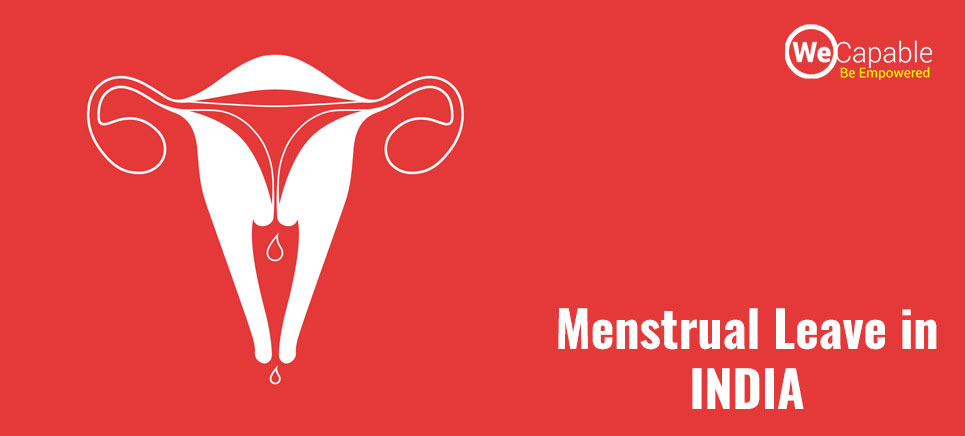Menstruation is a topic that is still talked about, if at all, in India in a hushed voice. People generally don’t feel comfortable talking about menstruation openly. So, topics like menstrual leave in India does not get as much serious discussion as it deserves. Now that a small debate has been created by the recent move of Zomato granting 10-days menstrual leave to its female employees, let us see how we, as a country, have dealt with the issue of menstrual leave to date.
Historical Aspect Regarding Menstrual Leave or Giving a Break to Women during their Menstruation
India is a culturally diverse country and one can find contradictory theories co-existing in almost every aspect of life. There are ancient temples like Maa Kamakhya Devi Temple of Guwahati and Chengannur Mahadeva Temple of Kerela where the menstruation period of the goddess is celebrated. At the same time, menstruating women are not allowed in temples and are mostly considered impure during ‘those’ days.
We are not going deep in the religious aspect of the matter. But, culturally we have seen that in traditional Indian families, women were given leave or break from all their responsibilities while they were menstruating. In many cases, women had to live in their separate quarters during that period and they could resume all their roles and responsibilities once the bleeding stopped. These cultural practices were seen as discriminatory towards the womenfolk. Slowly but surely women were able to break those practices and eventually society accepted women as participating members of the society even during their menstruation.
Demand for Menstrual Leave in India
After breaking the cultural taboos around menstruation, women started participating in economic activities too. The fight was tough but the pioneers made way for themselves as well as for those who were behind them. Some women realized that their bodies were biologically different from their male counterparts and they needed a break from work during their menstruation. But, this could put a break in the fight for equal opportunities in the male-dominated workspace. So, most of the women choose not to be vocal about their demand for menstrual leave. In fact, a whole lot of feminist women are against granting such ‘privilege’ which has the potential of labeling women as the ‘weaker sex’.
But, of course, there were and are women who believe that the biological differences should be accepted. And, the differences do not make anyone stronger or weaker; they just make men and women different.

Legislation Regarding Menstrual Leave in India
The earliest example of Menstrual Leave in India is that of a girl’s school in Kerala that granted the leave as early as 1912. But, this cannot obviously be classified as legislation.
So, the credit of first granting menstrual leave unexpectedly goes to Bihar, one of the most backward states of India. Back in 1991, the Bihar government employees were on a strike with their various demands like a hike in salary, promotion etc. About 10% of the employees were women and issues relating to menstrual leave or sanitation were not on the original list of demands. Some women casually suggested the topic of menstrual leave and it was readily added to the list. Not all demands were fulfilled after the negotiations but Lalu Prasad Yadav, the then CM of the state agreed to the menstrual leave almost instantly. A state government order was passed on 02 January 1992 declaring two days of consecutive ‘Special Casual Leave’ due to ‘biological reasons’ every month for every woman employee. Though the step was revolutionary, it didn’t get much media coverage. And we have confirmed that this menstrual leave is still available for the women employees of the Bihar government.
A Private Member Bill, called the Menstruation Benefits Bill, was tabled by Ninong Ering, a Lok Sabha member from Arunachal Pradesh in 2017. The Bill intended to provide two days of paid leave to women employees both in the private as well as the public sector every month. It further proposed for a better facility to rest during menstruation and ease of work options such as work from home or flexible timetable. It was also proposed that the benefits of the bill be extended to girl students of class-8 and above in the government-recognized schools.
To date, there is no national-level legislation in India to provide working women paid or unpaid menstrual leave.
Position of Private Sector in Providing Menstrual Leave in India
The present debates and discussions about Menstrual Leave in India have been triggered due to the latest announcement by Zomato. The food catering company announced a 10-day annual special leave for women employees. One day of leave can be availed during each menstrual cycle.
Zomato has gained national and international headlines with this announcement, but it is not the only company to do so in India.
Two Indian companies namely Culture Machine and Gozoop had earlier gained attention as pioneers for announcing one day off on the first day of their periods. In addition to these, there are other companies and start-ups like FlyMyBiz and Horse Stable News that provide menstrual leave to their female employees.
Use the citation below to add this article to your bibliography
"Menstrual Leave in India: Debate, Policy in Government and Private Sector." Wecapable.com. Web. May 31, 2025. <https://wecapable.com/menstrual-leave-in-india-debate-policy-in-government-and-private-sector/>
Wecapable.com, "Menstrual Leave in India: Debate, Policy in Government and Private Sector." Accessed May 31, 2025. https://wecapable.com/menstrual-leave-in-india-debate-policy-in-government-and-private-sector/
"Menstrual Leave in India: Debate, Policy in Government and Private Sector." (n.d.). Wecapable.com. Retrieved May 31, 2025 from https://wecapable.com/menstrual-leave-in-india-debate-policy-in-government-and-private-sector/

Leave a Reply